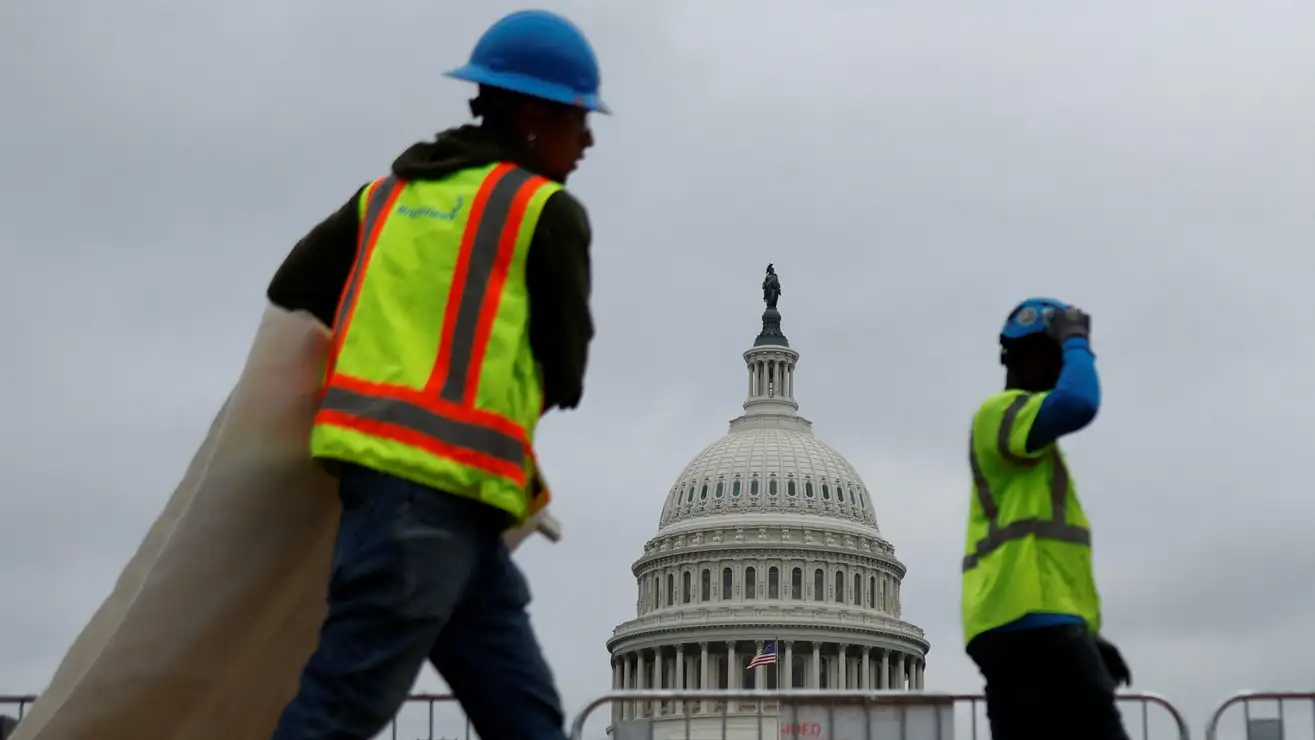Immigrants make up more of the US construction labor force than ever
 Construction workers near the US Capitol in Washington, DC.Image: Jonahtan Ernst (Reuters)
Construction workers near the US Capitol in Washington, DC.Image: Jonahtan Ernst (Reuters)
Foreign-born workers are helping make up for the ongoing construction industry labor shortage
Immigrants are helping make up for the labor shortage that has plagued the construction industry since the onset of the pandemic, according to a new analysis from the National Association of Home Builders (NAHB). Foreign-born US workers composed a record 25% of the construction labor force last year, when the sector attracted the most new immigrant workers since the housing boom of 2005-06.
Immigrants are also working more, period. Labor force participation among foreign-born workers has surpassed pre-pandemic levels, while non-immigrant workers are still catching up.
Why are more immigrants working in construction?
A hot labor market in 2022 and 2023 likely meant non-immigrant workers were drawn to other industries that are less physically taxing, according to Erica Groshen, senior economic advisor at Cornell University’s Institute for Compensation Studies and former commissioner of the US Bureau of Labor Statistics (BLS).
“So [if] people are getting more opportunities elsewhere, then you have fewer native-born people who are applying for those jobs,” Groshen said. “[US-born] people have opportunities that are going to earn them more money or be less dangerous.” That means more jobs are available for immigrants to fill.
Dangers to foreign-born construction employees
Immigrants are more likely to get injured or die on the job. In 2021, for example, immigrant Latinoworkers—both documented and undocumented—made up 8% of the US labor force but 14% of job-related deaths and 27% of construction-related deaths, according to the BLS.
That’s partly because immigrant workers have less access to construction apprenticeships run by unions, which offer more training and education, said Ligia Guallpa, executive director of the Worker’s Justice Project in New York City. Instead, most find their way into construction as gig workers or day laborers.
“Because it’s the workforce that is the least trained, most of them are more vulnerable to accept the most dangerous conditions in the work sites,” Guallpa said.
What the construction labor shortage means for the economy
While more immigrants worked in construction last year, the industry has yet to recover fully from its persistent workforce shortage. The job openings rate remains slightly higher than its 2019 level.
“Compared to the peak employment levels of 2006, construction is short 525,000 native-born workers [as of 2022] and new immigrants only partially close the gap,” wrote Natalia Siniavskaia, a researcher and economist for the NAHB.
The sector’s workforce shortage has widespread implications. A strain on labor in the industry will make it tougher for the US to complete projects funded by the Bipartisan Infrastructure Law passed in 2021. With fewer workers, projects get delayed and employers fill jobs with less-qualified workers to close the gap, reducing the quality of the finished product.
But the tightened labor market is good news for worker pay and bargaining power. Average US construction workers’ wages rose 5% in 2022—about one percentage point more than for the overall workforce, according to the Association of General Contractors. Wages are expected to increase 4.4% in 2023 by year-end.
https://qz.com/immigrants-make-up-more-of-the-us-construction-labor-fo-1851118320

Professional Recruiter Associates